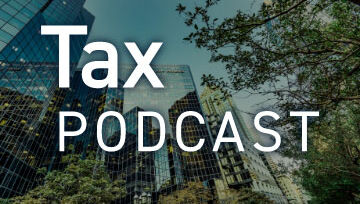As we draw closer to November, taxes have become an increasingly important issue for American voters. The 2017 Tax Cuts and Jobs Act (TCJA) enacted during the Trump administration has numerous provisions set to expire in 2025, making it a hot-button topic both presidential candidates are highlighting in their proposed economic and tax plans.
While there are some similarities between the respective Republican and Democratic proposals, such as eliminating income tax on tip income and expanding the child tax credit, former President Donald Trump and Vice President Kamala Harris predictably differ on key elements of their respective tax plans.
Trump’s Tax Proposals and Potential Impact
Extending the TCJA — and the Act’s more than $3.4 trillion individual and business tax cuts — is a key component of Trump’s campaign. Important provisions that would be continued by making the TCJA permanent include:
- Twenty percent qualified business income deduction for pass-through entities and proprietors
- Increased lifetime estate tax exemption
- Lower marginal tax rates and a higher standard deduction
- Carryforward only of net operating losses and 80% usage limit
- Limitation on excess business losses
- State and local tax (SALT) deduction cap
- Disallowance of miscellaneous itemized deductions
Other key elements of Trump’s tax plan include:
- Lowering the corporate income tax rate from 21% – 20%, or 15% for businesses making their products in the U.S.
- Imposing a baseline tariff on U.S. imports
- Imposing a 60% tariff on U.S. imports from China
- Expanding the child tax credit to a $5,000 universal credit
Making the TCJA permanent is estimated to save taxpayers around $4 trillion through 2034, according to the Joint Committee on Tax (JCT) and Congressional Budget Office (CBO). While Trump’s tariffs could generate $3.7 trillion in gross revenues, according to the Tax Policy Center, some critics of the policy are concerned the tariffs could be met with retaliation from trading partners and ultimately result in a net loss for the economy.
Harris’s Tax Proposals and Potential Impact
Harris is expected to continue certain aspects of the policies put forth by the Biden-Harris administration. Key elements of her tax plan include:
- Increasing the corporate income tax rate from 21% – 28%
- Increasing tax rates for the top 1% of earners
- Expanding and enhancing a variety of tax credits
- Creating a $25,000 first-time homebuyer credit
- Increasing the child tax credit to $6,000 for the first year of life
On September 4, 2024, Harris outlined additional elements of her tax proposal, including:
- A 28% tax on long-term capital gains for any household with an annual income of $1 million or more, lowering the 39.6% rate proposed by President Biden
- A $50,000 tax deduction for small business startup expenses, an increase from the current $5,000
- A 25% minimum tax on total income, including unrealized gains, or asset growth, exceeding $100 million
- Taxpayers with wealth above the $100 million threshold would have to report unrealized gains for each asset class annually, including the basis, or original purchase price, and market value.
While Trump aims to reduce corporate income tax, Harris hopes to enact a rate hike, which could reduce the federal deficit by $1 trillion over the next decade, according to the Committee for a Responsible Federal Budget. A 28% statutory corporate tax rate would rank among the highest in major economies and potentially reduce GDP.
Another key element of Harris’s tax proposal is increasing tax rates for higher earners while simultaneously offering tax credits to low- and middle-income taxpayers through the LIFT (Livable Incomes for Families Today) the Middle-Class Act. The LIFT Act proposes a refundable $3,000 tax credit for individual filers and a $6,000 tax credit for joint filers.
In addition to the refundable LIFT credit, Harris also plans to expand and enhance a variety of other tax credits, to include:
- A tax credit for renters earning under $100,000 and allocate 30% of income to rent
- A tax credit for housing developers
- The earned income tax credit for filers who do not claim children.
While these tax credits, specifically those intended to boost affordable housing, may target supply and boost demand, there is worry these policies focus too much on subsidizing home buyers rather than addressing real supply constraints. Additionally, if there aren't enough offsets to support these efforts, it may worsen federal debt.
What These Tax Policies Could Mean for Your Business
The economy and continued high inflation are still at the top of voter’s minds, and will likely be a heavily debated, key topic for the upcoming presidential election. Overall, the tax proposals put forth by Trump and Harris offer vastly different approaches to taxation and could have significant impacts on American businesses.
Ultimately, the outcome of the presidential election and the implementation of tax policies will have far-reaching implications for American businesses. It will be important for businesses to closely monitor these proposals and assess the potential impact on their operations and bottom line.
Disclaimer:
The content focuses on the candidate's tax proposal plans and is intended to provide general information about the potential tax legislation that may be implemented by the future government. The information provided in this content piece is not intended to serve as legal or tax advice and should not be relied upon as such. The prospective potential legislation mentioned in this content piece is subject to change, and there is no guarantee that any proposed legislation will be enacted into law. Any action taken based on the information provided in this content piece is at their own risk, and Cherry Bekaert shall not be held liable for any such action taken.



